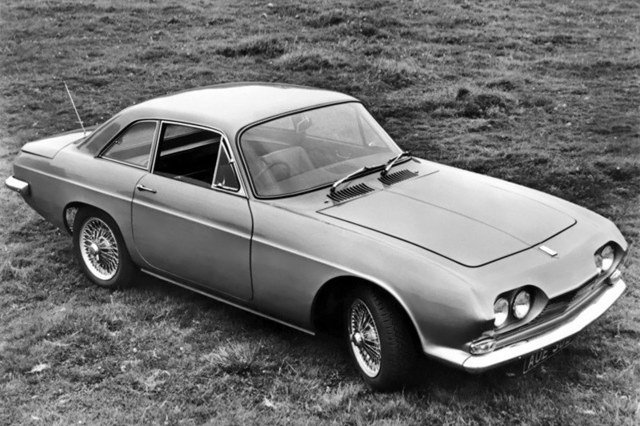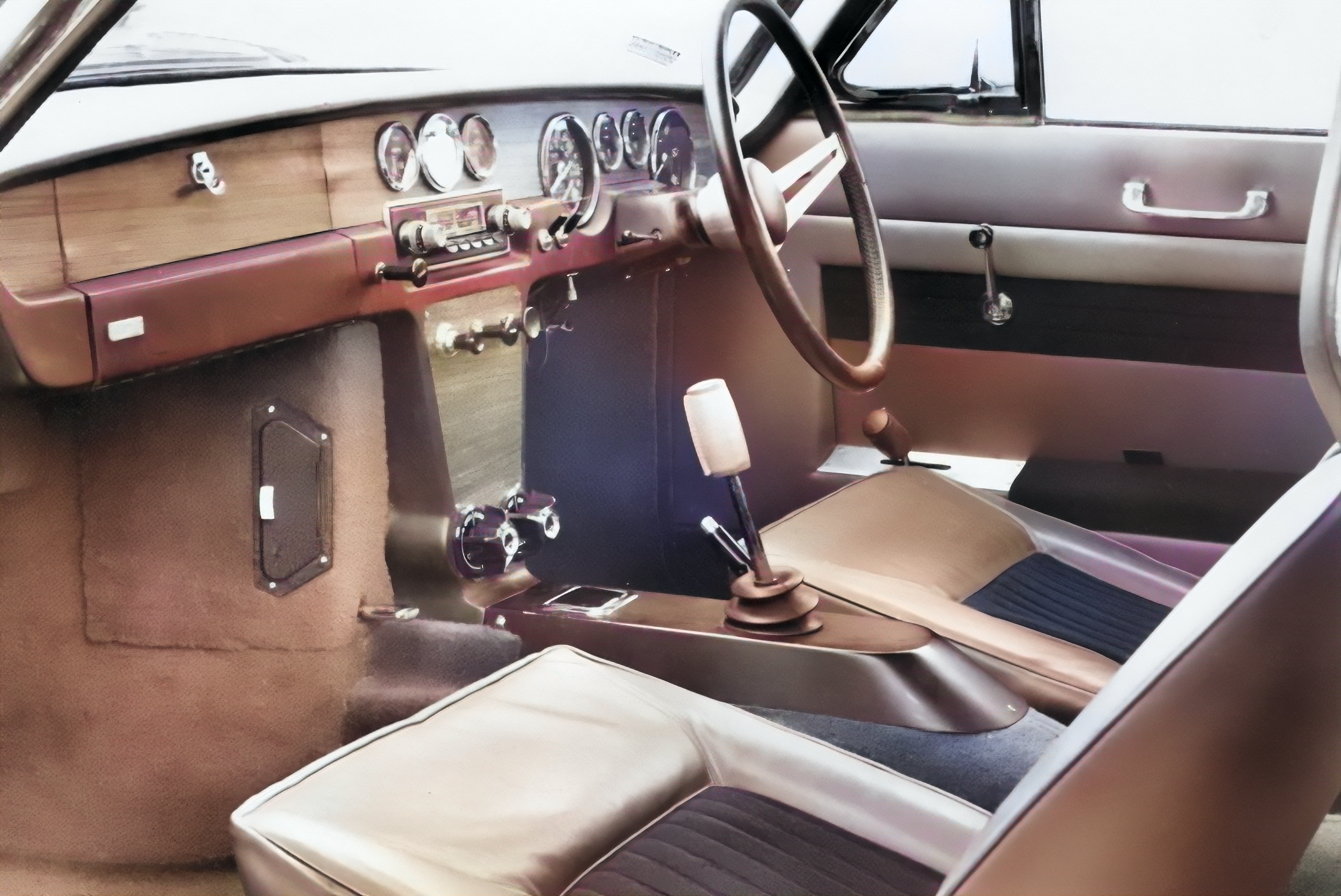

SE4 HISTORY

RELIANT PLUS OGLE AND A BIT OF BORIS
Successful new ventures often require a bit of good luck, alongside the mandatory hard work, expertise, and boundless enthusiasm. Such was the case with the creation of the SE4 Straight Six Scimitar GT.
Ray Wiggin joined Reliant in 1959 and was the driving force behind expanding the company’s range from three-wheelers to four-wheeled GT and sports cars. Undeterred by the very low sales of the Sabre models in the early 1960s, he was determined to create a modern, well-equipped GT car that would appeal to the sports car-buying public.
Meanwhile, David Ogle had founded his design company in 1959 and attracted Tom Karen—a talented designer from the Ford Styling Department—who would eventually become Managing Director of Ogle Design. Ogle’s foray into car design began with a fiberglass body for the Riley 1.5 chassis, intended to replace the somewhat dated and staid original body shape. This was followed by the more popular Ogle Mini, or SX1000, which became one of the most attractive Mini-based specials.
So how did these two separate entities who were quite independently designing and building fiberglass sports cars get together to start the range of Scimitar cars that were to be so successful over the next 25 years. That’s where a bit of good luck came in. Enter a most unlikely third party in the shape of Boris Forter ne’ Kougoulsky the 63 year old Managing Director of the UK arm of the luxury skin care and cosmetics company Helena Rubenstein who used David Ogle to design perfume boxes.
Boris placed an order with Ogle to design and build 6 Coupes based on sketches he provided and using the Daimler SP250/Dart chassis with their lovely small V8 engine.
The design was certainly initiated by David Ogle himself, although after his untimely death in an Ogle Mini, the car was completed by Carl Olsen under the guidance of Tom Karen. The resulting striking coupé was named the Ogle SX250 and debuted on the Ogle stand at the 1962 Earls Court Motor Show. There, it caught the eye of Ray Wiggin, who was immediately impressed and saw its potential as the Sabre replacement he’d been seeking.
Under Wiggin’s direction, Reliant quickly commissioned Ogle to design the Reliant Rebel and the Reliant Ant commercial vehicle. This marked the beginning of a close working relationship between Wiggin and Karen that continued until Wiggin’s departure from Reliant in 1977.
After taking delivery of his car in early 1963, Boris ordered a second for his mistress, Jean Hart, but it would be the last one built. With no further orders, Ogle was left with a handsome coupé design but no client. Tom Karen notes that it was never offered to Daimler/Jaguar, but even if it had been, there were no plans for a Dart replacement, and Bill Lyons wasn’t interested, Ray Wiggin was. Reliant had finally found the design it so badly needed to create the SE4.

OGLE SX250 to AUE38B
So Ray Wiggin and Reliant now had, courtesy of Ogle, a pretty Coupe body to go with their proven chassis and drive train from a Sabre 6. However, it wasn’t just a case of dropping the new body on and driving away - it was a lot more difficult than that. For one thing there was a dimension difference of two inches in the wheelbase and one and a half inches in the rear track width. More serious than that was the fact that Ogle and Reliant built GRP cars quite differently. Reliant wanted what in fact was a fibreglass monocoque made from bonding three main parts - body, floor/scuttle and engine compartment to form an independent rigid structure. Metalwork was restricted to Z beams in the sills, A and B pillar reinforcement with light bar bonded into the top of the passenger compartment. The SX 250’s body was an outer GRP shell supported by box tubing with a steel front bulkhead, a steel rear A frame and steel door shuts with hinge supports. Clearly there was much work to be done.
There was a modified body in clay undertaken by Ogle from which patterns were made for moulds. These moulds were transported to Ken Wood at Reliant’s Development Department for him to take a master which he refined to make the prototype production body. While sticking very much to the original Ogle design ethos Wood made numerous practical improvements. As well as sorting the dimension and construction differences he increased the rear legroom by moving the rear seat back six inches. Now a human could at least attempt to be a rear seat passenger! There was a subsequent lengthening of the roof and an increase in door width by five inches. For appearances the rear wheel arch was rounded off with the waistline now remaining level. Other minor styling changes included new bumpers and headlight surrounds. The result was an elegant, more coordinated look worthy of a true GT car and the Reliant Board had no hesitation in giving it the go ahead. It was code named the SE4.
Engineering under David Page had developed a modified Sabre 6 chassis for the new car not only increasing the length but also catering for the extra weight. Modified Sabre 6’s were used to develop the suspension with softer springing and the Ford Straight Six was tweaked and had triple SU’s. This set up lapped at MIRA at 110/115 mph. It is not clear what happened to chassis SC40001 but it does not seem that it ever became used for a registered car. Chassis SC40002 with Ken Woods prototype production SE4 body did. It was registered as an Ogle GT and had the registration AUE 38B







